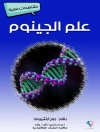Phytoremediation, the use of plants to remediate environmental media, is being pursued as a new approach for the cleanup of contaminated soils and waters, including groundwater. Plant-assisted bioremediation, sometimes referred to as a type of phytoremediation, involves the interaction of plant roots and the microorganisms associated with these root systems to re- diate soils containing elevated concentrations of organic compounds. These techniques could provide cost-effective methods of remediating soils and groundwater contaminated with metals, radionuclides, and various types of organics, with fewer secondary wastes and less environmental impact than would be generated using traditional remediation methods. All plants extract necessary nutrients, including metals, from their soil and water environments. Some plants, called hyperaccumulators, have the ability to store large amounts of metals, even some metals that do not appear to be required for plant functioning. In addition, plants can take up various organic chemicals from environmental media and degrade or otherwise process them for use in their physiological processes. Phytoremediation technologies are in the early stages of development, with laboratory research and limited field trials being conducted to determine processes and refine methods. Additional research, including genetic engineering, is being conducted to improve the natural capabilities of plants to perform remediation functions and to investigate other plants with potential phytoremediation applications. Large areas in Western and Eastern countries are polluted with heavy metals and radionuclides in natural, rural, urban or industrial areas.
Jadual kandungan
Why remediate?.- Hyperaccumulation of trace elements by plants.- Plant accumulation capacity for potentially toxic elements.- Genetically modified plants with improved properties for phytoremediation purposes.- Phytostabilisation of metal-contaminated sites.- Phytomanagement of radioactively contaminated sites.- Phytoremediation ediation of industrially-contaminated sites using trees.- Factors limiting efficiency of phytoextraction at multi-metal contaminated sites.- Litavka river alluvium as a model area heavily polluted with potentially risk elements.- Plant uptake of radiocaesium – potential for remediate radiopolluted soils.- Study of Cd accumulation by Thlas pi Caerulescens under presence of glucuronic acid containing exopolysaccharides.- Sunflower growth and tolerance to arsenic is increased by the rhizospheric bacteria Pseudomonas fluorescens.- Natural zeolites effect on heavy metals immobilization in soil.- The arsenic-phytoremediation potential of genetically modified pseudomonas spp.- Round table discussion: Sustainable Management of Natural Plant Resources for Phytoremediation.- Working group discussion: The Efficiency and Viability of Phytoremediation.












